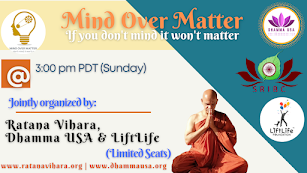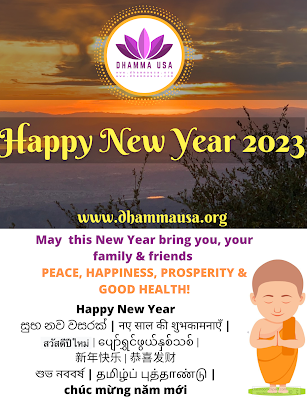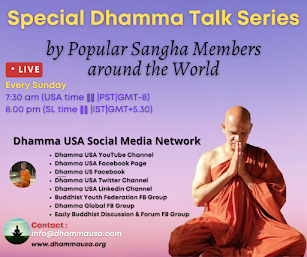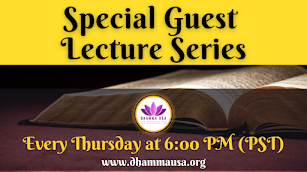A Philosophical Examination of the Buddhist Conception of Language and Reality
By Dr. Nivitigala Sumitta Thero (Bhante Sumitta)
Introduction
The relationship between language and reality is a profound and intricate subject in philosophical discourse, particularly within Buddhist thought. Buddhism offers a unique perspective on how language interacts with our understanding of reality, highlighting both its limitations and its potential. This essay delves into the Buddhist conception of language and reality, exploring the difficulties faced in conveying profound truths through language, the challenge of expressing Nirvāṇa, and the implications of language misrepresentation. By examining these aspects, we gain insight into how Buddhism addresses the constraints of linguistic expression and the pursuit of ultimate truth.
The Limitations of Language
Language is a fundamental tool for communication and understanding, yet it has inherent limitations when it comes to representing the full spectrum of reality. In Buddhism, these limitations are recognized as significant obstacles in conveying the depths of experiential and ultimate truths. As noted by Kalupahana, “the difficulties which faced the Buddha in the task of setting out his novel teachings could have been numerous and among these difficulties one was certainly the poverty of language available to convey the precise meanings which he had in mind.” This challenge is evident in the Buddhist emphasis on the insufficiency of language to fully describe the nature of reality.
Consider an individual who has never experienced sweetness or bitterness and lacks the vocabulary to describe these sensations. Attempts to explain these concepts through language alone may fail to convey the full experience, as the person cannot grasp the concept without direct sensory experience. The Buddha highlighted this limitation by advocating for "experiential understanding," where direct engagement with the reality (such as tasting sugar to understand sweetness) transcends mere verbal explanation. This approach underscores the Buddha’s recognition of language’s limitations and the importance of direct experience in grasping profound truths.
The Expressibility of Nirvāṇa
Nirvāṇa, the ultimate goal in Buddhism, poses a significant challenge when it comes to expressibility. In the Theravada tradition, Nirvāṇa is defined as the cessation of greed, hatred, and delusion, achieved through insight into the impermanence of all things. Although the Buddha attained enlightenment and understood this ultimate truth, conveying the essence of Nirvāṇa through conventional language remains problematic.
Nirvāṇa is described as an experience beyond ordinary conceptualization, deeply tied to individual insight and realization. Communicating such an experience to someone who has not attained it is inherently difficult. For example, expressing the feeling of love to someone who has never felt it can be challenging because the emotions and subjective experiences involved are difficult to fully communicate. This limitation is even more pronounced when discussing Nirvāṇa, which eludes conventional description and requires direct experiential understanding.
The Buddha’s teachings often employ analogies and metaphors to convey the nature of Nirvāṇa, yet these are limited in their ability to capture the full essence of the experience. The challenge lies in bridging the gap between direct, experiential knowledge and its verbal representation, making it difficult for those who have not attained Nirvāṇa to fully comprehend its nature.
Misrepresentation and Misuse of Language
Another critical issue in the relationship between language and reality is the potential for misrepresentation. Language can be misused to convey falsehoods or distortions, leading to misunderstandings about reality. The Buddha addressed this issue by emphasizing the importance of truthfulness in speech, stating, “abhūtavādī nirayaṅ upeti ye katvā na karomīticāha” (a person who lies will go to hell).
Misrepresentation occurs when individuals make false statements or present misleading information about their actions or intentions. This misuse highlights a fundamental problem: even if language has the potential to represent reality, it does not always do so accurately or truthfully. The Buddha’s emphasis on ethical communication reinforces the idea that integrity in language is crucial for understanding and avoiding the pitfalls of misrepresentation.
Conclusion
The Buddhist perspective on language and reality reveals a nuanced understanding of the limitations and potentials of linguistic expression. While language is an essential tool for conveying ideas and teachings, it often falls short of fully capturing the profound and experiential aspects of reality, such as Nirvāṇa. The Buddha’s teachings recognize these limitations and advocate for direct, experiential understanding as a complement to verbal descriptions. Additionally, the potential for misrepresentation and misuse of language underscores the need for truthfulness and integrity in communication. Ultimately, the Buddhist approach highlights the complex interplay between language and reality, acknowledging both its constraints and its role in the pursuit of truth.
Bibliography
Dhammadassi Bhikkhu, Naimbala, and B. Kenneth Gunatunge. What is Reality? A Compendium of Scientific Discovery and The Buddha's Discovery. Authors, 2010.
Kalupahana, David J. The Buddha's Philosophy of Language. 1st ed. Ratmalana: Sarvodaya Vishva Lekha Publishers, 1999.
Kalupahana, David J., and W. G. Weeraratne, eds. Buddhist Philosophy and Culture: Essays in Honour of N.A. Jayawickrema. Colombo 3: N.A. Jayawickrema Felicitation Volume Committee, 1987.
Majjhima Nikaya. Vol. 2. Colombo: Government of Ceylon, 2006.
Piyarathana Thero, Ven. Prof. Wegama. Buddhist Attitude Towards Aesthetics. Maharagama: Author, 2010.
Saifalin, Murad, ed. Dictionary of Philosophy. 1984.
Samyutta Nikaya. V-1-2. B.J.T.P. Colombo: Government of Ceylon, 2006.
Endnotes
1 Dhammadassi Bhikkhu, Naimbala, and B. Kenneth Gunatunge, What is Reality? A Compendium of Scientific Discovery and The Buddha's Discovery (Authors, 2010).
2 Piyarathana Thero, Ven. Prof. Wegama, Buddhist Attitude Towards Aesthetics (Maharagama: Author, 2010), p. 62.
3 Majjhima Nikaya 2,2,1.
4 Majjhima Nikaya 2,4,5, Brahmāyu Sutta.
5 Kalupahana, David J., The Buddha's Philosophy of Language, 1st ed. (Ratmalana: Sarvodaya Vishva Lekha Publishers, 1999), p. 15.
6 Kalupahana, David J., The Buddha's Philosophy of Language, 1st ed. (Ratmalana: Sarvodaya Vishva Lekha Publishers, 1999), p. 15.
7 Piyarathana Thero, Ven. Prof. Wegama, Buddhist Attitude Towards Aesthetics (Maharagama: Author, 2010), p. 60.
8 Saifalin, Murad, ed., Dictionary of Philosophy (1984), p. 431.
9 Piyarathana Thero, Ven. Prof. Wegama, Buddhist Attitude Towards Aesthetics (Maharagama: Author, 2010), p. 70.
10 Ibid.
11 Ibid.
12 Majjhima Nikaya, Vol. 2 (Colombo: Government of Ceylon, 2006), p. 666.
13 Kalupahana, David J., The Buddha's Philosophy of Language (Ratmalana: Sarvodaya Vishva Lekha Publishers, 1999).
14 Samyutta Nikaya, V-1-2 (B.J.T.P. Colombo: Government of Ceylon, 2006).
15 S 4.21; A 2.72; Dh 4, 174.
16 S 1.127; A 1.116; Dh 273; It 108, 115.
17 D 3.5, 227.
18 Kalupahana, David J., and W. G. Weeraratne, eds., Buddhist Philosophy and Culture: Essays in Honour of N.A. Jayawickrema (Colombo 3: N.A. Jayawickrema Felicitation Volume Committee, 1987), p. 4.
19 Dhammadassi Bhikkhu, Naimbala, and B. Kenneth Gunatunge, What is Reality? A Compendium of Scientific Discovery and The Buddha's Discovery (Authors, 2010), p. 272.
20 Ibid., p. 272.















































0 comments:
Post a Comment
Your comments and feedback are very helpful to us in improving our posts. We really appreciate your time. Thank you!
Dhamma USA Team.